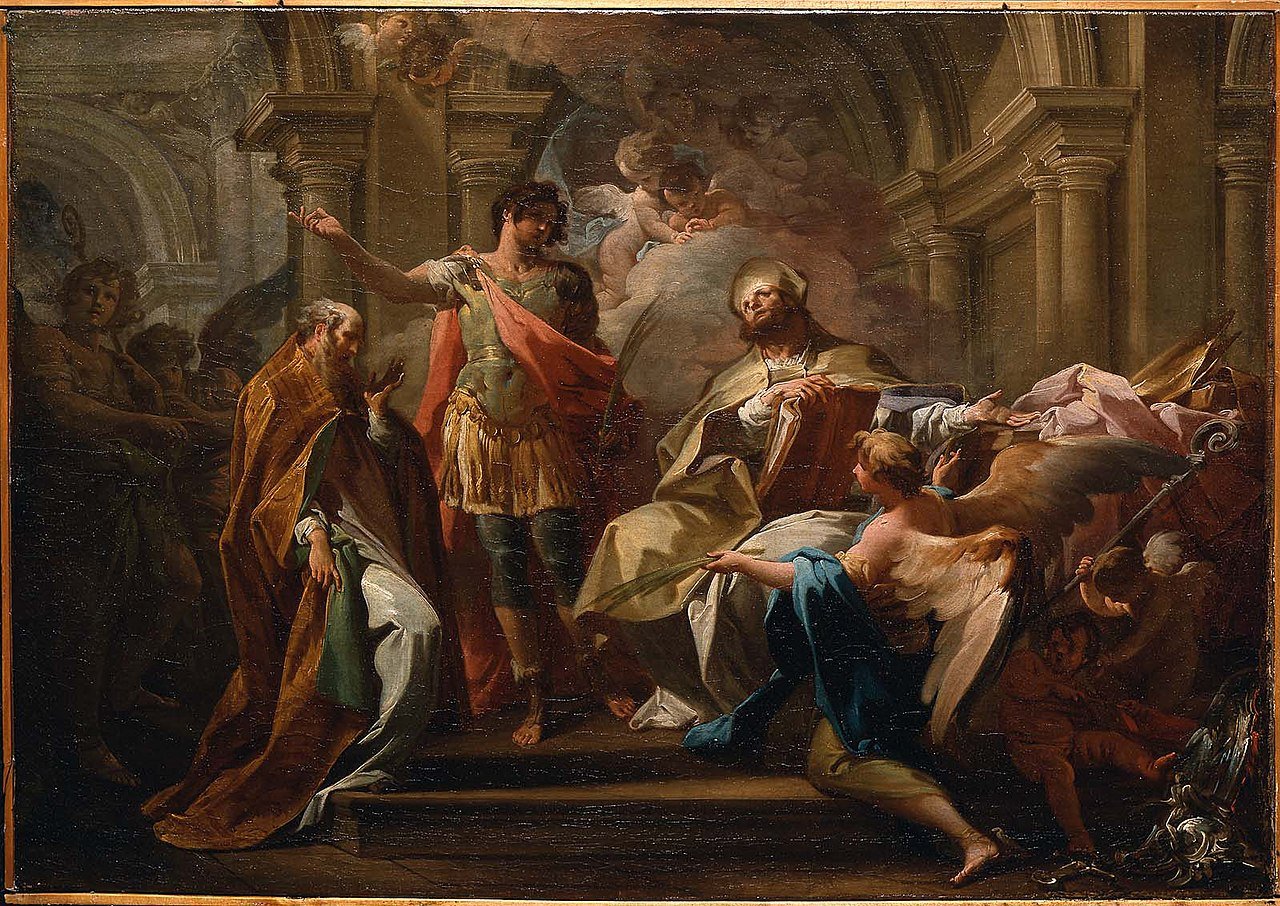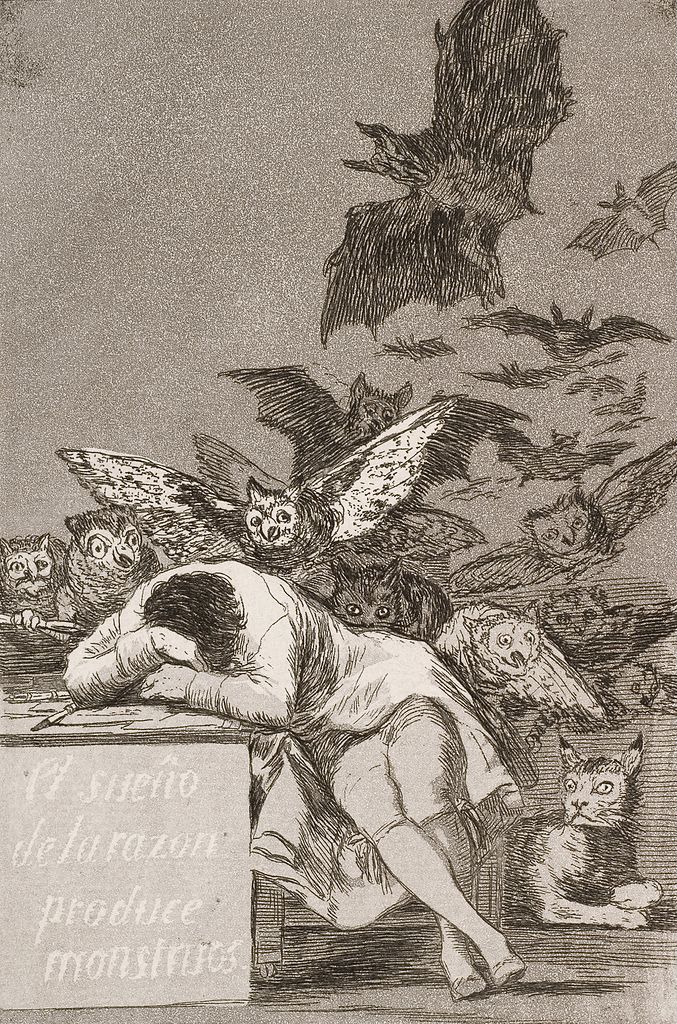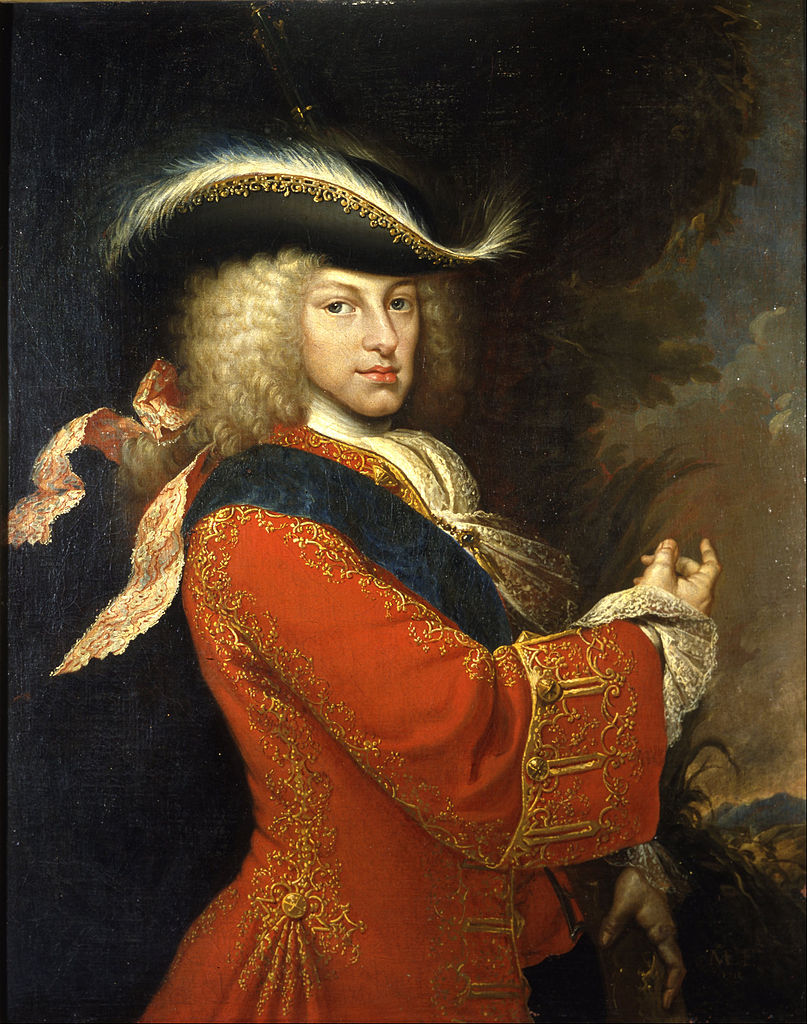A General Ferment
One cannot reduce Spain’s contribution in the 18th-century to just fiction or the literature of ideas. The real intellectual ferment that characterized this era across the Pyrenees affected all areas in which the human spirit is illustrated, from poetry to fine arts, through music, science and architecture. Multiplying examples and names in all these disciplines would not, however, be of great help in understanding the general orientations of the Spanish Enlightenment, as well as the challenges of the period. This is why we will content ourselves with succinctly developing some fundamental aspects of this century.
The historiography of this Iberian nation generally divides the members of the Ilustración into four successive generations:
- The critical generation, notably represented by Father Benito Jerónimo Feijoo (1676—1764), who analyzed the causes of the “decadence” of the country and proposed solutions to reform it, especially in educational matters;
- The erudite generation, which sought to inventory the Spanish cultural heritage and laid the foundations for its conservation and study, while renewing the national historiography, as with the works of Gregorio Mayans (1699-1781) and Father Enrique Flórez (1702—1773);
- The reformist generation, known for its political action and its theoretical treatises, like Pedro Rodríguez de Campomanes (1723-1802), author of Discurso sobre la educación popular de los artesanos (which advocated special instruction for artisans) and Tratado de la regalía de la amortización (which gave a critical view of the agrarian system at the time);
- The neo-classical generation, which tried to incorporate French influence even more into Spanish thought and arts, but also noted its failure, with the French Revolution and the Napoleonic invasion of Spain (1808-1814), like Gaspar Melchor de Jovellanos (1744-1811).
New Structures Of Thought
Ilustrada literature could not be conceived outside of places of sociability that nourished debate and creativity of artists. These places could be purely intellectual, like articles in the press, or very concrete, such as, academies, tertulias (places of meeting and discussion), saraos (dinners followed by animated conversations), parties, balls, invitations or even courtesy visits.
The eventual development of the publishing world, still very much oriented towards religious subjects, could not hide the growing circles of debate, such as, the Academy of Good Taste, created in 1749 in Madrid; the Auberge of Saint-Sebastian, in the capital; the Basque Economic Society, founded in 1764 in Vergara; the Royal Society of Madrid, opened in 1775; the Academy of Human Letters, established in 1793 in Seville; plus various associations in more or less important cities like Cadiz, Ciudad Rodrigo, Osuna, Vera de Bidasoa, Valladolid, Zaragoza, Chinchón, Valencia, Tarragona, etc. These clubs, inspired by salons that could be seen flourishing in France, England or in German areas, and especially attracting local and national elites (nobility, clergy, big bourgeoisie).
The eighteenth century was, in Spain, the century of academies, sponsored by the monarchy; in the forefront of which was the Royal Academy of Language (1713). It was followed by the creation of the Royal Academy of History (1738), the Royal Academy of Fine Arts Saint-Ferdinand (1744), and the Royal Academy of Jurisprudence and Legislation (1763). Such organizations carried out the important task of rationally recording knowledge in dictionaries, such as, the Diccionario de autoridades of 1739, the Tratado de ortografía of 1742, the Gramática of 1771, the Diccionario manual of 1780, the Diccionario histórico-crítico universal de España in 1736, or the Diccionario de los literatos in 1751.
The royal officials were not outdone by systematic work in the field of bibliographies, such as, Ensayo de una biblioteca de los mejores escritores del reinado de Carlos III by Juan Sempere y Guarinos (in 1789); Memorias políticas y económicas sobre los frutos, fábricas, comercio y minas de España by Eugenio Larruga y Boneta (in 1800); or in the area of geography, such as, Viaje de España by Antonio Ponz (in 1794).
Some educational institutions, which existed on the fringes of the official university, seemed very open to new trends from the rest of Europe. This was particularly the case for pilot schools, the first chambers of commerce (Juntas de Comercio) and several private colleges. All these establishments were seconded in their efforts, not by a bourgeoisie which was still struggling to emerge in Spain, but by ecclesiastics, military officers, progressive aristocrats, or even officials of the monarchy.
Benito Jerónimo Feijoo, Spiritual Father Of The Spanish Enlightenment
If certain writers, such as Diego de Torres Villarroel (1694-1770), or José Francisco de Isla (1703-1781) are sometimes considered as precursors of the Ilustración, it is Benito Jerónimo Feijoo who seems to have initiated this new era by the original character of his work in Spanish literature.
He prefigured—by his simple and direct style, his spiritual preoccupations, his polemical tone, his will to educate, and his passion for science and ideas from the rest of Europe—polemists like Juan Pablo Forner (1756-1797), or fabulists like Félix María Samaniego (1745-1801) and Tomás de Iriarte (1750-1791).
Deeply anti-Aristotelian and opposed to scholasticism, Benito Jerónimo Feijoo became known in September 1726, when he began to sell copies of the first volume of his Teatro crítico universal. It was a collection of speeches aimed at combating the scientific, religious and ideological errors of the time. Between 1742 and 1760, he freed himself definitively from Baroque forms, whose survival was still attested at the beginning of the century, and published the Cartas eruditas y curiosas. In this work, he drew upon a wide range of European philosophers and scientists (Francis Bacon, Pierre Gassendi, Isaac Newton, etc.) and advocated the use of the analytical method, as opposed to syllogistics still in vogue at universities.
Defender of reason, but also of spontaneity in writing, rhetoric and artistic criticism (he introduced concepts like “je ne sais quoi” and “taste” in Spain), he also demonstrated his great scholarship. He graced his speeches with quotations and references to other thinkers on the continent, such as Pierre Bayle.
Common sense (sentido común) was one of the fundamental intellectual hallmarks of Father Feijoo, who, as a Benedictine, was also sensitive to the religious reform implemented by the monks of the Abbey of Saint-Germain-des-Prés. A resolute opponent of a number of national traditions, which he considered absurd and without documentary basis, he facilitated the renewal of Spanish historiography. The latter took place under the impetus of José Manuel Miñana (1671—1730), Manuel Martí (1663—1737), Juan de Ferreras (1652—1735), Luis de Salazar y Castro (1658—1734), and Gaspar Ibáñez de Segovia, Marquis de Mondéjar (1628—1708).
The Controversy Of The Theater, Testimony To The Tensions Of The Ilustración
A great theater nation since the end of the Middle Ages, Spain had a tradition in this area very different from that of classical French dramaturgy and which one could compare to Shakespearean theater. It is to Lope de Vega (1562—1635) that we owe the establishment of special rules in his Arte nuevo de hacer comedias en este tiempo. Characterized by the absence of unity of place, time and intrigue, the theater of the Lopesca school (whose disciples were Guillén de Castro, Juan Ruiz de Alarcón, and Luis Vélez de Guevara) was founded on the mixture of comedy and tragedy, and advocated a great freedom specific to the Baroque aesthetic. It was these precepts that dominated until the end of the Golden Age, especially among giants like Tirso de Molina (1579—1648) and Pedro Calderón de la Barca (1600—1681).
With the change of dynasty and the new influences from France, the Spanish authorities sought to impose a radical metamorphosis of dramaturgy, in particular by promoting neoclassicism. This “official art”, which was difficult to promote because of public tastes and political and religious censorship, led to a controversy over the “xenomania” of national leaders and their rejection of tradition.
Very much inspired by Jean Racine and Voltaire, Spanish neoclassical tragedy followed the precepts of La poética by Ignacio de Luzán (1702—1754), while exploiting specific historical themes. Such was the case with pieces like Munuza, by Jovellanos (1769), Sancho García, by Cadalso (1771), or even Raquel, by Vicente García de la Huerta (1788). Criticism of Baroque theater, which in fact brought success to Spanish belles lettres, was obvious in a number of authors who deplored the heavy gaze of the Inquisition and the monarchy, namely, Agustín de Montiano (1697—1764), Nicolás Fernández de Moratín (1737—1780) and his son Leandro (1760—1828), Ignacio López de Ayala (1739—1789), and various others.
The passion of the Spanish (and in particular of the people of Madrid) for the theater and live performance led to numerous disputes among authors, actors, genres and poetics. In this context, the neoclassical comedy of Leandro Fernández de Moratín is the only one that posterity has truly retained, notably with The Maidens’ Consent (1806). The general public, for its part, preferred popular forms: magical comedies (which take place in a magical universe full of special effects), musical theater (especially with the emerging zarzuelas and tonadillas) and the theater of pathos (sentimental melodrama) whose intrigue often revolves around a marriage blocked and thwarted.
The success of sainetes (little one-act plays, often taken down, whose name is at the origin of the French saynète play) and entremeses (comic one-act theatrical plays, generally performed during the intermission) testified to the extent of the controversy among supporters of French aesthetics and advocates of the nation’s genius. Both sainetes and entremeses were indeed genres that grew out of the Golden Age which allowed playwrights, like Ramón de la Cruz (1731—1794), to satirize the neoclassical deemed pedantic.
We therefore see the emergence, behind these apparently literary discussions, of ideological oppositions, whose content was fully revealed at the time of the French Revolution.
Explorers and Scientists: Pioneers Of Progress In Spain And America
At the end of the 19th-century, the Spanish thinker Manuel de la Revilla provoked controversy around the contribution of Spain to Western scientific and technological progress. His thesis, that Spain was insignificant in both these areas compared to its neighbors, was supported by great intellectuals and researchers, like Santiago Ramón y Cajal, Miguel de Unamuno, Américo Castro, José Ortega y Gasset, Gregorio Marañón, or Julio Rey Pastor. In contrast, philosophers of stature, such as, Marcelino Menéndez Pelayo took issue with this theory, underlining the fecundity of the nation’s science.
This controversy about science was indicative of Spain’s inferiority complex, whose work in the technological field is still little known abroad. In fact, Iberian science was not outdone by its comparable European counterparts. Such was the case during the Golden Age, with a figure like Jerónimo de Ayanz (1553—1613), to whom we owe the first steam engine in history.
In the 18th-century, Spain participated in the race for science in Europe, for example, providing discoverers like Juan José and Fausto Delhuyar (who isolated tungsten), and Andrés Manuel del Río (who discovered vanadium). In the wake of the many learned societies formed all over Spain, scientists from across the Pyrenees sought to advance human knowledge.
The country was right at the forefront in this regard because of its colonial possessions in America and Asia-Pacific. This is why Iberian researchers were explorers and navigators, who theorized their empirical discoveries. Such was the case, for example, of one Jorge Juan (1713—1773), the reformer of the Spanish naval system, whose main contribution was to have measured the length of the terrestrial meridian and to have proved that the Earth was slightly flattened at the poles. He thus continued the long Spanish tradition of understanding the fundamental terrestrial mechanisms and mapping that can be observed from the end of the Middle Ages.
In the long list of explorer-scientists of the time, we can mention the case of Félix de Azara (1742—1821), soldier, engineer, cartographer, anthropologist and naturalist. He was intellectually responsible for very fruitful expeditions to the interior regions of Latin America, which were still poorly understood at the time. Cooperation with other countries, notably France, was regular in this context.
Indeed, from the reign of Philip V (1700-1746), Madrid participated in the expedition to the meridian by the Paris Academy of Sciences, under the direction of Charles Marie de La Condamine. Besides Jorge Juan, mentioned earlier, Antonio de Ulloa (1716-1795) was also on the trip. Important written impressions of this itinerary are recorded in the Relación histórica del viaje a la América Meridional (1748), and in the Noticias secretas de América (1772).
Such expeditions were a great way to study the flora and fauna of the New World, especially under royal patronage. In 1777, Charles III entrusted a five-year mission to Hipólito Ruiz (1754-1816), who identified and described with precision three thousand plants, and produced around a thousand drawings of these plants. Most of this unpublished work is now kept at the Museum of Natural Sciences and the Royal Botanical Garden in Madrid.
The figure of Ruiz is however somewhat overshadowed by that of one of his contemporaries, José Celestino Mutis (1732—1808). The celebrity of the latter is such beyond the Pyrenees that an engraving depicting him adorned the two thousand pesetas banknote, in final issue of Spanish currency before the adoption of the euro, in 1992. It was at the request of Archbishop Antonio Caballero y Góngora, the viceroy of New Granada (which brought together the current countries of Venezuela, Colombia, Ecuador, Panama and Guyana), that Mutis surrounded himself with scholars from the Iberian Peninsula or America (Antonio Zea, Sinforoso Mutis, Francisco de Caldas, Jorge Tadeo Lozano, Salvador Rizo). This was the fruit of their labor: 7,000 color drawings and 4,000 descriptive plates of the Latin American flora preserved by the Royal Botanical Garden of Madrid.
Charles III and Charles IV continued on this path, with the expedition of Martín Sessé (1751—1808) and especially that of the navigator of Tuscan origin, Alejandro Malaspina (1754-1809) (50). The latter gave his name to a vessel of the Spanish Navy.
At that time, however, it was the Royal Philanthropic Vaccine Expedition (1803-1806), led by Francisco Javier Balmis (1753-1819), that had the greatest impact. Following the work of the Englishman Edward Jenner, inventor of the smallpox vaccine, the Spanish monarchy promoted what is often considered the greatest humanitarian mission of all time. Most of Hispanic America is now immune to this endemic disease, thanks to the action and advice of Balmis and his second, José Salvany.
By Way Of Conclusion – A Rich Civilization Essential To Understanding The World
The murderous words of Nicolas Masson de Morvilliers, which we reproduced at the beginning of this investigation, take on a completely different meaning at the end of our study—which cannot be exhaustive. We can see how these words were the fruit of ignorance, prejudice and bad faith of an era, but also of a form of Hispanophobia which spread throughout the Western world, from the Renaissance down to our own times.
Spain has been an integral part of the progress of the human mind since its existence as a nation. Even in times of extreme difficulty and isolation on the international scene, as during the Franco dictatorship (1939—1975), this Iberian nation has never ceased to contribute to the improvement of knowledge of humanity and to the promotion of the arts and literature.
The rapid overview of the Ilustración (this Spanish variation of the Enlightenment) that I have just presented will show, I hope, that our Spanish friends were at the origin of a double civilization (both in Europe and in America), rich and essential to understanding the universe around us.
The French version of the article appeared in Revue Conflits. Translated from the French by N. Dass.
The image shows, “Saints Ippolito, Taurino, and Ercolano,” by Antonio González Velázquez, painted ca. 1740-1742.


